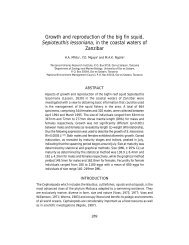gpa_east_africa_case.. - GRID Africa GeoPortal - UNEP
gpa_east_africa_case.. - GRID Africa GeoPortal - UNEP
gpa_east_africa_case.. - GRID Africa GeoPortal - UNEP
You also want an ePaper? Increase the reach of your titles
YUMPU automatically turns print PDFs into web optimized ePapers that Google loves.
• Opportunity cost. When decisions are taken to protect the coast that forego developmentopportunities, the income foregone shows the cost of conservation in terms of the itsalternative development use. This approach is particularly useful when financial resourcesneed to be mobilised to fund conservation programmes to compensate local communities forloss of development income.Indirect Valuation. Valuation of indirect benefits from the services and quality of the coastalenvironment, such as habitat, recreation, amenity, as well as the biodiveristy of the coastalenvironment, are not reflected in market transactions. Such indirect benefits are most likely to beunder-estimated in coastal management decisions. Biodiversity involves particularly controversialvaluation issues. The economic valuation of biodiversity does not attempt to place a monetaryvalue on ecology per se but aims to assess people’s preferences for biodiversity and the“demand” for conservation relative to development. This is the area in which environmentaleconomics make particular contribution to coastal management by applying Contingent ValuationMethods (CVM) and the concept of the Willingness-to-Pay (WTP).Contingent Valuation. Contingent valuation relies on data derived through questionnaire surveyby asking target population groups directly about their willingness-to-pay (WTP) to obtain orpreserve a certain level of environmental quality. Respondents are asked to choose from ascaled price-menu how much they would be willing to pay to enjoy environmental benefits. CVMare typically used to ascertain the value of aesthetic benefits and the existence value ofecosystems. CVM are also applied to value publicly or privately provided goods such as watersupply and sewerage in areas without such services.Travel cost. The travel cost method is an example of a technique that attempts to deduce valuefrom observed behaviour. It uses information on visitors’ total expenditure to visit a site or a parkto derive their “demand curve” for the site’s services. The technique assumes that changes intotal travel costs are equivalent to changes in admission fees. From this demand curve, the totalbenefit visitors obtain can be calculated.Hedonic methods. Hedonic models have been widely used to examine the contribution ofenvironmental quality to property prices. An house in an aesthetically pleasing coastal areashould sell for more than a similar house in a polluted area. Hedonic techniques allow this effectto be measured, holding other factors such as size and interior features constant.Further information on valuation techniques is cited in several references including:• D. Pearce et. al. Introduction to Environmental Economics, 1995• Hanley N. and Spash C.L., Cost-Benefit Analysis and the Environment, 1995• D. Perarce & D. Moran, The Economic Value of Biodiversity, 1996• D. Pearce and J. Warford et. al. World Without End, 1992• David Pearce, et. al. A Blueprint for Green Economy, 19901.4 Cost–Benefit Analysis: An IntroductionCost-Benefit Analysis is an informationsupport tool for decision–making oncompeting priorities. In the field ofenvironmental management, it is applied tohelp set environmental action priorities byidentifying and measuring the costs andbenefits of pollution control options andresource management strategies. It providesinputs for decisions on how much capitalinvestment is justified relative to the expectedbenefits. Under ideal conditions, decisionsshould focus on projects and measures thatmaximise net social benefit. In economicterms, this requires an estimate of thePollution Damage in the Nethelands(in millions) Annual damage 1986 US$Air Pollution 0.5 -0.8Water Pollution 0.1- 0.3Noise Pollution 0.0J.B. Opschoor, A Review of MonetaryEstimates of Environmental Improvementsin the Netherlands, OECD Workshop,1986Final Draft Report – Cost Benefit Case StudiesGPA Strategic Action Plan on Sewage, October, 200011



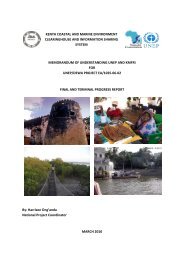
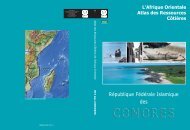
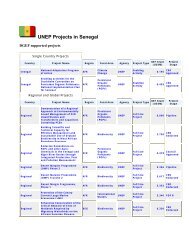

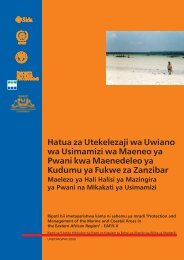
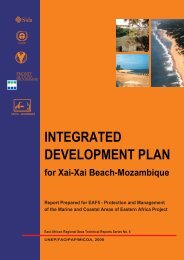
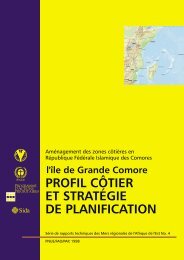
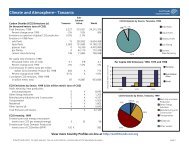

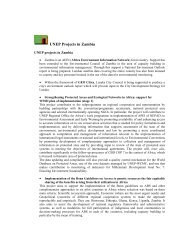
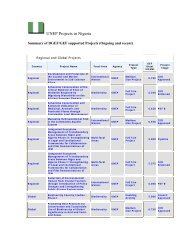
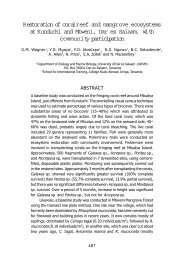
![Please Click to download [English] - GRID Africa GeoPortal - UNEP](https://img.yumpu.com/30633391/1/184x260/please-click-to-download-english-grid-africa-geoportal-unep.jpg?quality=85)
